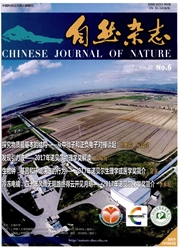

 中文摘要:
中文摘要:
西藏自治区作为青藏高原的主体,地质构造强烈,地形高差巨大,具有高寒气候和河谷区高强度降水,为泥石流滑坡的发育提供了良好的条件,泥石流、滑坡分布广、类型多、灾害重。主要发育冰川消融型泥石流、冰湖溃决型泥石流、降雨型泥石流和冻融型泥石流、残坡积层土质滑坡、基岩顺层推移式滑坡、复活老滑坡等。泥石流、滑坡的空间分布特点为:沿断裂构造带密集分布、在地震活动带成群分布、在深切割的高山峡谷地区带状间断分布、沿交通干线成线状密集分布、依照海拔高度发育不同类型的泥石流和滑坡。受自然和人类活动的双重影响,在城镇和道路、水利工程建设场地附近,灾害活跃,危害严重,对社会经济发展影响较大。选择川藏公路帕隆藏布路段和中尼公路聂友段为典型路段,提出了干线公路泥石流滑坡监测预警系统建设的初步设想。筛选出26处需要治理的城镇,以聂拉木县城泥石流灾害综合防治为例,提出包括监测预警、工程防治和临灾预案等的综合减灾措施。
 英文摘要:
英文摘要:
Tibet,the main part of the Qinghai-Tibet Plateau,is a hypersensitive terrain for the generation of debris flows and landslides,and is noteworthy for active tectonism,sharp changes in topography,and for cold,dry conditions at high elevations contrasting with intense rainfall in valleys. Widespread in Tibet,debris flows are triggered by glacial meltwater,glacial lake outburst floods,rainstorms and freeze-thaw activity. Thick deposits of large landslides,both modern and ancient,are common. In general,debris fl...
 同期刊论文项目
同期刊论文项目
 同项目期刊论文
同项目期刊论文
 期刊信息
期刊信息
